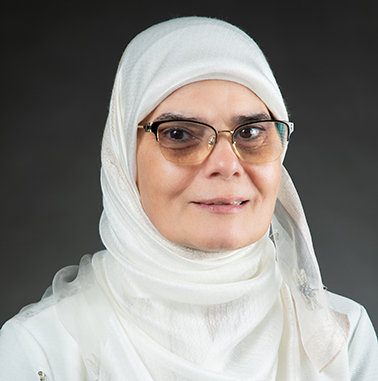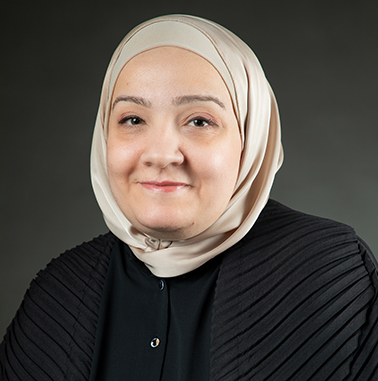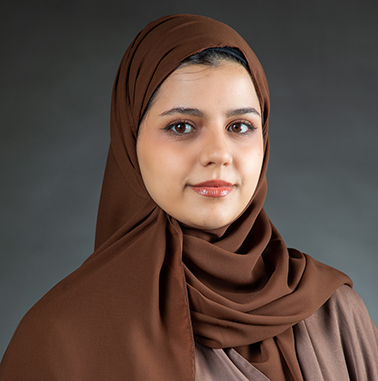
Duration
Four Years
Medium of instruction
English
Degree awarding body
SCD
Program Mission
The mission of the interior design program is to provide design knowledge and skills through the exploration of interior spatial design to create functional spaces that consider the user’s well-being.
Accreditation
Institutionally Accredited by OAAAQA & Overseen by the MOHERI in the Sultanate of Oman.
Substantial Equivalency of the Bachelor of Science in Interior Design from the National Association of Schools of Art and Design (NASAD).
Quality Assurance Certificate from the Accreditation and Quality Assurance Commission for Higher Education Institutions (AQACHEI - Jordan).
The Bachelor of Science in Interior Design qualification awarded by the Scientific College of Design is listed at Level 8 on the Oman National Qualifications Framework (OQF)by the Oman Academic Accreditation Authority and Quality Assurance of Education (OAAAQA) as the first Interior Design program in Oman to be listed in the OQF, (November 25, 2024).
Program Description
Interior design is the process of conceptualizing space and creating expressive interior environments that enhance the quality of life and contribute to society's health, safety, and welfare. The practice of interior design integrates the aesthetic and cultural domains with the functional and technical ones to provide design solutions that respond to human needs. Interior design gives shape and meaning to the spaces that users inhabit. By responding to design requirements, interior designers develop creative design solutions for residential, commercial, industrial, and administrative spaces.
Program Objectives
- Practice appropriate design processes to create optimal interior designs.
- Apply precise problem-solving skills in creating design solutions.
- Employ various techniques and skills to communicate interior design projects effectively.
- Develop awareness of environmental issues and systems to design sustainable interiors.
- Follow national and international standards to construct a complete working drawing set.
Program Learning Outcomes
- Practise general educational knowledge, such as languages, research skills, and business and psychological principles, and apply them in their respective professions.
- Develop English proficiency to communicate effectively using art and design terminology.
- Apply art and design elements and principles to create artwork.
- Demonstrate communication skills through free-hand drawing, computer-aided programs, and model making.
- Outline elements and principles of the interior, history, human behavior, design theories, and ecological issues underlying design solutions.
- Design creative interiors using specific concepts based on project program requirements and users’ needs.
- Create sustainable interior design solutions considering the local environment.
- Construct detailed building documents using precise data and specifications.
Career Opportunities
Gain employment as an interior designer in architectural, interior, and creative design firms. Work in management and sales within the design industry in the domains of furniture, lighting, fabrics, and finishes. Seek employment as creative designer in theatrical and TV set design as well as in general media productions.
Year
Semester 1
ART510
Drawing I
3
DES511
Design Studio I A/B*
4
DES512
Technical Graphics I
3
DES513
Introduction to Design
3
ENG500
English for Art & Design I
3
LRT600
Learning Research Techniques
3
Semester 2
DES613
Perspective Drawing
3
DES614
Design Studio II A/B*
4
DES615
Technical Graphics II
3
ENG600
English for Art & Design II
3
GRA510
Introduction to Computer Graphics
3
Year
Semester 1
ART610
Drawing II
3
DES620
History of Design
3
DES710
Design Studio III *
5
ENG800
English Academic Writing
3
DES712
Sketching
2
Semester 2
CST510
History of Oman Civilization
3
ELE500
Elective
3
ARC652
History of Architecture I
3
DES616
Computer Graphics I
3
DES812
Colors, Materials and Finishes in Int. Des.
2
PHO510
Photography I
3
Year
Semester 1
DES721
Computer Graphics II
3
ELE700
Elective
3
DES800
Design Studio IV *
5
PSY500
Introduction to Psychology
3
DES713
History of Interior Design
3
Semester 2
ARC751
Aesthetic Theories
3
DES714
Interior Design Workshop I
2
DES715
Interior Design Technology I
3
ENG700
Fundamentals of Oral Communication
3
DES813
Technical Graphics III
3
DES716
Construction Documents I
2
Year
Semester 1
DES810
Design Studio V *
5
DES817
Construction Documents II
2
ENT600
Entrepreneurship
3
DES814
Interior Design Internship
1
DES815
Furniture Design Workshop
3
DES816
Interior DesignTechnology II
3
Semester 2
ARC758
Introduction to Islamic Architecture
3
DES819
Contemporary Trends
3
DES820
Design Studio VI *
5
ARA510
Arabic Creative Writing
3
Semester 1
ART510
Drawing I
3
DES511
Design Studio I A/B*
4
DES512
Technical Graphics I
3
DES513
Introduction to Design
3
ENG500
English for Art & Design I
3
LRT600
Learning Research Techniques
3
Semester 2
DES613
Perspective Drawing
3
DES614
Design Studio II A/B*
4
DES615
Technical Graphics II
3
ENG600
English for Art & Design II
3
GRA510
Introduction to Computer Graphics
3
Semester 1
ART610
Drawing II
3
DES620
History of Design
3
DES710
Design Studio III *
5
ENG800
English Academic Writing
3
DES712
Sketching
2
Semester 2
CST510
History of Oman Civilization
3
ELE500
Elective
3
ARC652
History of Architecture I
3
DES616
Computer Graphics I
3
DES812
Colors, Materials and Finishes in Int. Des.
2
PHO510
Photography I
3
Semester 1
DES721
Computer Graphics II
3
ELE700
Elective
3
DES800
Design Studio IV *
5
PSY500
Introduction to Psychology
3
DES713
History of Interior Design
3
Semester 2
ARC751
Aesthetic Theories
3
DES714
Interior Design Workshop I
2
DES715
Interior Design Technology I
3
ENG700
Fundamentals of Oral Communication
3
DES813
Technical Graphics III
3
DES716
Construction Documents I
2
Semester 1
DES810
Design Studio V *
5
DES817
Construction Documents II
2
ENT600
Entrepreneurship
3
DES814
Interior Design Internship
1
DES815
Furniture Design Workshop
3
DES816
Interior DesignTechnology II
3
Semester 2
ARC758
Introduction to Islamic Architecture
3
DES819
Contemporary Trends
3
DES820
Design Studio VI *
5
ARA510
Arabic Creative Writing
3
Course Details









Head of the Department of Architecture and Interior Design

It is my pleasure to welcome you in our Department which is dedicated to cultivate your creative thinking, problem- solving capability, technology information and skills. High qualified and Long experienced faculty members are devoted and ready to support you during your under-graduate and post- graduate educational path. They will assist you to acquire a high level of competence and confidence to be ready for a promising career and work opportunities.
Dr. Mohammed Khalil ,
Head of the Department of Architecture and Interior Design
Scientific College of Design

1
Success in General Education Diploma or its Equivalent.2
The students should get a minimum grade of C- in • Design Studio I, Design Studio II, and Drawing IBS - Interior Design
Tuition Fees
| Duration | Credit Hours | Fees | Other Fees | Sub Total | |
|---|---|---|---|---|---|
| General Foundation Program | 3 Semesters | - | 2,575 OMR | - | 2,575 OMR |
| Design Foundation Program | 2 Semesters | 36 | 2,700 OMR | 250 OMR | 2,950 OMR |
| Bachelor Degree | 6 Semesters | 96 | 7,200 OMR | 750 OMR | 7,950 OMR |
| Grand Total | 13,475 OMR | ||||
* Fees / tuitions are subject to changed accoridng to the college financial polcies / procedures and upon MoHERI approval
Finance Details
Oman Arab Bank
3128231666500
Bank Muscat
0313029205120016
Sohar International Bank
043020017921
*All payment are accepted through bank deposit.







